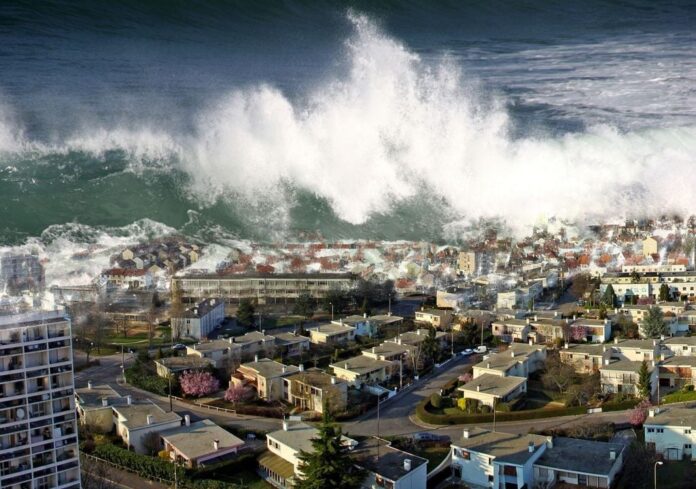The Pacific has once again become the epicentre of global tremor anxiety, a massive 8.8-magnitude earthquake struck off Russia’s Kamchatka Peninsula overnight, reviving Cold War-era fears of seismic vulnerability, tsunami devastation, and the fragility of modern infrastructure. From Hokkaido to Honolulu, from Severo-Kurilsk to the Mexican coast, a wave of alerts and evacuations is rolling through the Pacific Ring of Fire, as if to remind the world that when the earth shudders in Russia’s Far East, the tremors ripple well beyond its borders.
A seismic event of historical violence
At precisely 23:25 GMT, an undersea quake struck just 126 km off the Kamchatkan coast, a violent jolt registered at a depth of 20.7 km, later upgraded by the US Geological Survey from 8.7 to 8.8 on the moment magnitude scale. The strongest in the region since 1952, this Tsunami Pacific alert is not a drill. It is a planetary pulse, and one of geopolitical resonance.
Severo-Kurilsk, a small town of 2,000 in the Kuril Islands, was rapidly inundated. Amateur footage circulating on Russian channels shows entire blocks consumed by water in minutes. Authorities declared a state of emergency, as the government of Sakhalin confirmed the evacuation of the archipelago’s northern districts.
Japan: the trauma of 2011 revived
Across the Sea of Okhotsk, Japan’s reaction was immediate and tense. Public broadcaster NHK interrupted programming with tsunami alerts. In Hokkaido, cars and pedestrians scrambled toward higher ground. Evacuations were ordered across the eastern seaboard, from the icy coasts of the north to the densely populated bays of Tokyo and Osaka.
Initial forecasts from the Japanese Meteorological Agency warned of tsunami waves up to one meter. That figure was quickly revised to three meters, and with it, memories of March 2011 returned. Fukushima’s crippled nuclear plant once again became a focal point, as its staff were evacuated amid precautionary protocols.
Rail lines were suspended. Sirens echoed in coastal cities. The words of government spokesman Yoshimasa Hayashi cut through the haze: “Evacuate immediately. Lives are at stake.”
Continental reach: Mexico, US, China all on edge
The Tsunami Pacific alert has transcended East Asia. Mexico’s civil protection services issued a blanket coastal warning from Baja California to Chiapas. Peru and Ecuador followed, ordering the evacuation of the Galápagos and other vulnerable coasts. In French Polynesia, Hawaii, and Guam, authorities predicted waves up to three meters.
In the United States, the Pacific Tsunami Warning Center issued tiered alerts from Alaska to California. Mobile phones in San Diego and Los Angeles lit up with emergency messages. This is the Pacific, a theatre where no coastline is ever truly distant.
Even China, usually silent on natural threats, issued a rare tsunami bulletin for parts of its eastern seaboard, citing potential “damage in low-lying zones.” The Philippines ordered its eastern provinces to move inland. The waves, even modest, are dangerous in shallow bays, and politically sensitive in fragile democracies.
A fault line of tectonics, and sovereignty
The Kamchatka Peninsula is not just a remote volcanic outcrop. It is where the Pacific Plate dives beneath the North American Plate, the heart of the so-called “Ring of Fire.” Since 1900, at least seven quakes over magnitude 8.3 have struck this lonely frontier.
But this Tsunami Pacific alert is about more than geology. It is about fragility: of infrastructure, of coordination, of state legitimacy. When a single shock can trigger alerts across a dozen nations, it reveals how much of global modernity still rests on physical fault lines.
And the response? A mosaic of uneven preparedness. Some nations send automated alerts. Others rely on loudspeakers and luck. China, for once, acknowledged risk. The United States kept calm but watchful. Japan, disciplined but visibly haunted, performed the evacuation choreography it has rehearsed for decades.
Conclusion: warning waves in a restless Pacific
The tremor that struck beneath Kamchatka may subside, but its message echoes: Earth’s crust remains volatile, and nations remain unequally poised to withstand its fury. The Tsunami Pacific alert should not be read merely as a technical notice, but as a political X-ray.
A continent-spanning tectonic event tests not only our sensors, but our sovereignty, our civil coordination, and the integrity of our coastal systems. In this increasingly fragile Pacific century, the true threat may not be the wave, but the illusion of preparedness it exposes.



